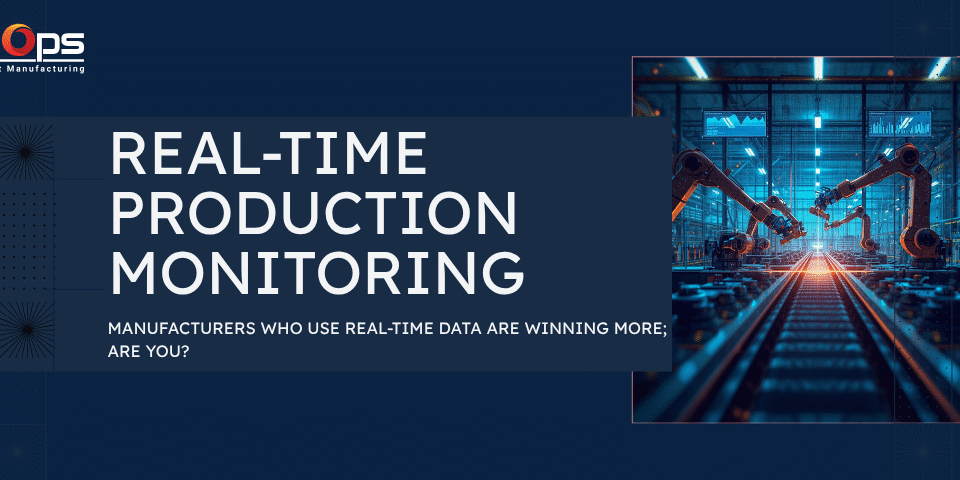
How to Improve Manufacturing Efficiency in 2025: Simple Strategies for Big Results
January 2, 2025
The Rise of the Smart Factory: How IIoT Is Reshaping Manufacturing
January 28, 2025AI Agents: Empowering Smart Manufacturing for the Future
The manufacturing industry is embracing an exciting transformation, driven by the rise of AI agents in smart manufacturing. These intelligent, autonomous systems are revolutionizing production lines, enhancing efficiency, and predicting maintenance needs. However, a new frontier is emerging within AI agents: the introduction of Super AI agents and a sophisticated AI agent hierarchy. These advanced systems are taking manufacturing automation to the next level, optimizing processes like never before.
To understand the significance of AI agents, Super AI agents, and their hierarchical structure, it’s crucial to first recognize the role of real-time data in smart manufacturing. AI agents rely on comprehensive data to make informed decisions and autonomously manage production workflows, predictive maintenance, quality control, and supply chain optimization. The seamless integration of real-time data management is essential for these AI agents to operate at their full potential.
The Power of AI Agents in Smart Manufacturing
AI agents are intelligent software systems that leverage machine learning, big data analytics, and artificial intelligence. It helps to perform tasks autonomously, reducing the need for human intervention. In manufacturing, AI agents optimize production processes, detect inefficiencies, predict machine failures, and even handle inventory management. These capabilities drive improved productivity, minimized downtime, and enhanced quality control.
AI agents in smart manufacturing help manufacturers stay competitive by ensuring that every part of the production cycle is streamlined and efficient. But the evolution of AI doesn’t stop there—enter the era of Super AI agents.
What Are Super AI Agents?
Super AI agents represent the next level of artificial intelligence in smart manufacturing. Unlike standard AI agents, which are designed to optimize specific tasks (e.g., monitoring machine performance, predicting maintenance needs), Super AI agents have the ability to manage complex, cross-functional tasks across the entire manufacturing process. These AI agents are highly advanced and equipped with higher-level decision-making capabilities, enabling them to oversee entire systems and make strategic decisions in real time.
Super AI agents can analyze massive amounts of data from all areas of manufacturing. This allows them to optimize supply chain logistics, quality control, and resource allocation. By managing multiple processes simultaneously, Super AI agents ensure a seamless flow of operations. This leads to unprecedented efficiency in manufacturing.
The AI Agent Hierarchy
Just as the manufacturing world has evolved to include highly specialized roles for human workers, AI agents are also organized in a hierarchy based on their functionality and scope. The AI agent hierarchy consists of different levels of AI systems, each with a specific role in the manufacturing ecosystem:
- Basic AI Agents: These are the foundational agents in smart manufacturing, responsible for monitoring machine performance, tracking production metrics, and providing real-time insights. They detect inefficiencies and provide recommendations for improvements.
- Intermediate AI Agents: These agents manage more advanced tasks, such as predictive maintenance, quality control, and resource optimization. By analyzing data patterns and trends, they predict when equipment is likely to fail and recommend maintenance actions to prevent unplanned downtime.
- Super AI Agents: At the top of the AI agent hierarchy, Super AI agents possess comprehensive decision-making power and control. These agents analyze data from all levels of manufacturing operations and adjust workflows, production schedules, and resource allocation in real time. Super AI agents can adapt to changing circumstances, optimize operations across departments, and make long-term strategic decisions that drive growth.
How Super AI Agents and the AI Agent Hierarchy Transform Manufacturing
AI agents in smart manufacturing work together within this hierarchy to ensure that everything operates efficiently, from raw material management to the final product delivery. The Super AI agent acts as the orchestrator, overseeing and managing the interaction between different AI agents at lower levels of the hierarchy.
Here are a few ways in which Super AI agents and AI agent hierarchies are changing manufacturing:
1. Real-Time Decision Making
Super AI agents make decisions in real time, analyzing data from all systems to identify bottlenecks, predict demand, and optimize production schedules. This reduces delays and ensures that operations are always running at their most efficient.
2. Predictive Maintenance at Scale
With Super AI agents, manufacturers can scale their predictive maintenance strategies. These agents analyze data across multiple machines and plants, predicting when and where maintenance is needed, even for complex, interdependent systems. This significantly reduces downtime and extends the lifespan of critical equipment.
3. End-to-End Automation
Super AI agents can autonomously manage every aspect of the production process, from material procurement and production planning to quality control and shipment. By integrating data from all aspects of the supply chain and manufacturing floor, Super AI agents ensure seamless automation and continuous production flow.
4. Sustainability Optimization
Manufacturers are increasingly focused on sustainability, and Super AI agents play a critical role in helping achieve these goals. These agents optimize energy consumption, minimize waste, and improve material usage efficiency, contributing to both cost savings and environmental sustainability.
Data Management: The Backbone of AI Agents in Smart Manufacturing
To enable AI agents, especially Super AI agents, to make real-time decisions, they need access to high-quality, integrated data. A robust data management platform ensures seamless data flow between Operational Technology (OT) and Information Technology (IT) systems.
With real-time data integration, manufacturers can empower their AI agents to take immediate action and make decisions that keep production on track, avoid costly downtime, and increase overall productivity.
Conclusion: Unlocking the Full Potential of AI Agents in Smart Manufacturing
The introduction of Super AI agents and the AI agent hierarchy represents a significant leap forward in smart manufacturing. These intelligent systems enable real-time decision-making, predictive maintenance, resource optimization, and end-to-end automation across manufacturing operations. As AI technology continues to evolve, manufacturers who embrace the power of AI agents will stay competitive. This will help them navigate an ever-changing industrial landscape.
For businesses to truly leverage the potential of AI agents, they must integrate robust data management systems that provide accurate, real-time insights across the manufacturing ecosystem. iDataOps offers the foundation needed to seamlessly integrate data from both OT and IT systems, empowering manufacturers to optimize operations and drive innovation in this new era of smart manufacturing.



